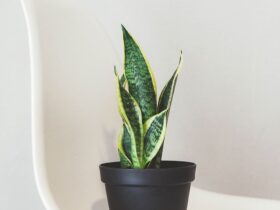Care and maintenance are fundamental aspects of preserving the longevity, functionality, and aesthetics of virtually anything we own or interact with. From our homes and vehicles to our clothing and personal electronics, consistent and proactive care significantly reduces the likelihood of costly repairs, premature replacements, and overall dissatisfaction. Neglecting these essential practices can lead to a cascade of issues, ultimately diminishing the value and usability of our possessions.
The Importance of Proactive Maintenance
The core principle behind effective care and maintenance is being proactive rather than reactive. Waiting for a problem to manifest before taking action is almost always more expensive and time-consuming than addressing potential issues before they escalate. Think of it like preventative healthcare – regular check-ups and healthy habits are far more effective (and less stressful) than dealing with a serious illness after it develops.
Proactive maintenance involves:
- Regular Inspections: Periodically examining items for signs of wear and tear, damage, or malfunction. This could be as simple as visually inspecting your car tires for adequate tread depth or checking the seals around your windows for drafts.
- Scheduled Servicing: Following recommended maintenance schedules, such as oil changes for your car or annual inspections of your HVAC system. These schedules are typically outlined in the product’s manual or by the manufacturer.
- Cleaning: Regularly cleaning items to remove dirt, dust, and debris that can contribute to corrosion, blockages, or reduced efficiency. This could include dusting furniture, vacuuming carpets, or cleaning out gutters.
- Lubrication: Applying lubricants to moving parts to reduce friction and prevent wear. This is particularly important for machinery, hinges, and other mechanical components.
- Minor Repairs: Addressing small issues promptly before they become major problems. This might involve tightening loose screws, patching small holes, or replacing worn-out parts.
Care and Maintenance in Different Areas
The specific care and maintenance requirements will vary depending on the type of item or property in question. Here’s a look at some common areas and the specific maintenance practices associated with them:
Home Maintenance
Maintaining a home requires a multi-faceted approach that encompasses both interior and exterior components.
- Exterior: Regularly inspect the roof for damage (missing shingles, leaks), clean gutters to prevent water damage, inspect and repair siding, seal cracks in the foundation, and maintain landscaping to prevent overgrowth and potential damage.
- Interior: Inspect plumbing for leaks, check electrical wiring for damage, clean and maintain appliances (refrigerator coils, oven cleaning), inspect and maintain HVAC systems (filter replacements, duct cleaning), and address any mold or mildew issues promptly.
- Seasonal Maintenance: Prepare your home for different seasons. This includes winterizing pipes, preparing your HVAC system for summer or winter, and adjusting landscaping for seasonal changes.
Vehicle Maintenance
Proper vehicle maintenance is crucial for safety, performance, and longevity.
- Regular Oil Changes: Following the manufacturer’s recommended oil change schedule is essential for engine lubrication and preventing wear.
- Tire Maintenance: Regularly check tire pressure, inspect tires for wear and damage, and rotate tires to ensure even wear.
- Brake Maintenance: Inspect brake pads, rotors, and brake fluid regularly. Replace worn parts promptly to ensure safe braking.
- Fluid Checks: Regularly check and top off all fluids, including coolant, brake fluid, power steering fluid, and windshield washer fluid.
- Scheduled Servicing: Adhere to the manufacturer’s recommended service schedule for tasks such as tune-ups, belt replacements, and filter replacements.
Clothing and Textiles
Proper care of clothing and textiles can significantly extend their lifespan and maintain their appearance.
- Follow Care Labels: Always follow the instructions on the care label for washing, drying, and ironing.
- Wash Clothes Properly: Use appropriate detergents and washing cycles for different types of fabrics. Avoid overloading the washing machine.
- Dry Clothes Properly: Avoid over-drying clothes, as this can damage fibers. Consider air-drying delicate items.
- Store Clothes Properly: Store clothes in a clean, dry place. Use garment bags to protect delicate items.
- Repair Damages Promptly: Repair tears, rips, and missing buttons as soon as possible to prevent further damage.
Electronics
Electronic devices require careful handling and maintenance to ensure optimal performance and longevity.
- Keep Electronics Clean: Regularly clean screens, keyboards, and other surfaces with a soft, dry cloth.
- Protect from Extreme Temperatures: Avoid exposing electronics to extreme temperatures, as this can damage internal components.
- Protect from Moisture: Keep electronics away from water and other liquids.
- Proper Charging: Use the correct charger and avoid overcharging batteries.
- Software Updates: Keep software and operating systems up to date to ensure optimal performance and security.
Benefits of Care and Maintenance
Investing time and effort into care and maintenance yields numerous benefits:
- Extended Lifespan: Proper care can significantly extend the lifespan of your possessions, saving you money in the long run.
- Reduced Repair Costs: Addressing minor issues early on can prevent them from escalating into costly repairs.
- Improved Performance: Well-maintained items function more efficiently and effectively.
- Enhanced Safety: Regular maintenance can identify and address potential safety hazards.
- Preserved Value: Maintaining your possessions helps to preserve their value, which can be important for resale purposes.
- Peace of Mind: Knowing that your possessions are well-maintained provides peace of mind and reduces stress.
Schlussfolgerung
Care and maintenance are not just chores; they are investments in the longevity, performance, and value of our possessions. By adopting a proactive approach and following recommended maintenance schedules, we can significantly reduce the risk of costly repairs, extend the lifespan of our belongings, and enjoy the peace of mind that comes with knowing that everything is in good working order. Whether it’s your home, your car, your clothing, or your electronics, embracing the principles of care and maintenance will ultimately save you time, money, and stress.
Häufig gestellte Fragen (FAQs)
















Eine Antwort hinterlassen